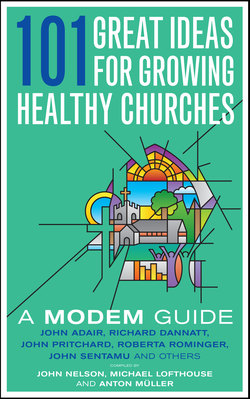Читать книгу 101 Great Ideas for Growing Healthy Churches - John Nelson - Страница 8
На сайте Литреса книга снята с продажи.
ОглавлениеIntroduction to 101 Great Ideas for Growing Healthy Churches
JOHN NELSON
Perhaps it is an age thing. I remember the days when you could lift a car bonnet and see the engine. You could access the nuts and bolts, clean the distributor cap, change the water pump, those things that made up the heart of the car and made it go. With the help of a good maintenance manual you could get stuck in and fix it. Today I lift the bonnet and all I see is a sheet of moulded plastic and a port for somebody else to plug in a computer. Only experts can now fix it!
I sometimes think this is what we have done to leadership and management in the Church. It has been encased in a sheet of expert moulded plastic. What should be a practical and accessible job has been made so complex that it is almost impossible for us to get our management hands dirty. Experts reign and there are not too many easy to follow manuals out there to encourage you not to rely on others; to help you get beneath the plastic; to help you get your management hands dirty.
This book is your church leadership and management manual. Like a good car manual you will be able access the book to give you ideas and instructions on how to start to engage and use those management spanners. Arranged alphabetically this is not bedtime reading but a manual that you can refer to at any time. After all, if you have a problem with the suspension you do not need to be wading through pages and pages dealing with the fuel injection system. And like a good car manual each topic is written by a proven practitioner; somebody who has had to fix it and make it work. An eclectic mix of instructions, case studies, quotes and diagnostic exercises all selected to help you to engage and address that leadership or management issue.
Most contributions are supported by a Bible reference offered by the author or suggested by the editorial team. The editorial team also selected a Top Tip drawn from or inferred by the topic under discussion. Alongside contributions the editorial team have placed a Business Perspective. It is important to note that these represent part of the editorial process in an attempt to bring an equivalent secular context into consideration.
At the heart of this book are the many contributions which aim to deal with the how and why of church management and leadership. Finally there is a self-reflective diagnostic exercise. Like all good manuals it can be read and shared by others in your team: designed for you to be able to pull off the shelf when required and presented concisely to allow you quickly to apply that management spanner. No moulded plastic formed of management jargon, no port for somebody else to fix. This is a practical manual to help you engage.
I am grateful to all those practitioners who contributed and to Michael Lofthouse and Anton Müller who have so expertly edited the book.
